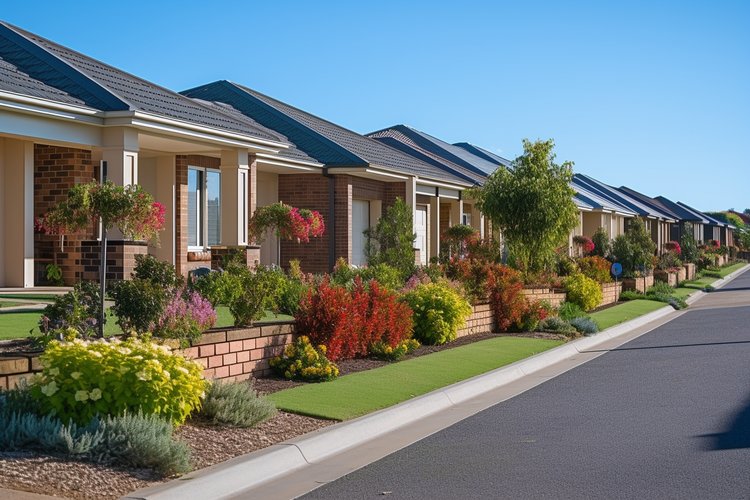Suburban Micro-Developments: The Next Big Thing in Real Estate
Introduction: In a surprising twist to urban sprawl, suburban micro-developments are emerging as a game-changing trend in real estate. These compact, thoughtfully designed communities are reshaping the landscape of suburban living, offering a unique blend of city-like amenities and the tranquility of suburban life. With 68% of millennials expressing interest in these innovative living spaces, micro-developments are poised to redefine suburban real estate markets across the nation.

Historical Context and Evolution
The concept of micro-developments can be traced back to the early 20th century garden city movement, which aimed to create self-contained communities that balanced urban and rural living. However, the modern iteration of suburban micro-developments has evolved in response to changing demographics, shifting lifestyle preferences, and the need for more sustainable housing solutions.
In the post-World War II era, suburbs experienced rapid expansion, characterized by large single-family homes and car-dependent communities. As urban centers became increasingly crowded and expensive, many families sought refuge in these sprawling suburban developments. However, this model of suburban growth has faced criticism for its environmental impact, lack of community cohesion, and reliance on automobiles.
Key Features of Suburban Micro-Developments
Suburban micro-developments are designed to address many of the shortcomings of traditional suburban planning while capitalizing on the benefits of suburban living. Some key features include:
-
Compact Design: Homes in micro-developments are often smaller and more efficiently designed, reducing the overall footprint of the community.
-
Shared Amenities: These developments typically include communal spaces such as parks, gardens, and recreational areas, fostering a sense of community among residents.
-
Walkability: Micro-developments prioritize pedestrian-friendly design, with shops, services, and amenities often within walking distance.
-
Sustainability: Many of these communities incorporate green building practices, renewable energy systems, and water conservation measures.
-
Mixed-Use Integration: Some micro-developments include small-scale commercial spaces, allowing for a blend of residential and retail environments.
Market Trends and Financial Implications
The suburban micro-development trend is gaining traction among both developers and homebuyers. According to recent market research, properties in micro-developments have shown an average appreciation rate of 7.2% annually over the past five years, outpacing traditional suburban homes by 2.3%.
Developers are finding that these projects offer higher returns on investment due to more efficient land use and lower infrastructure costs. For homebuyers, micro-developments present an opportunity to enter desirable suburban markets at a lower price point, with the average home in a micro-development costing 15-20% less than comparable properties in the surrounding area.
Impact on Suburban Real Estate Markets
The introduction of micro-developments is reshaping suburban real estate markets in several ways:
-
Diversification of Housing Stock: Micro-developments are adding variety to suburban housing options, attracting a more diverse range of residents.
-
Increased Density: By introducing pockets of higher-density housing, these developments are helping to support local businesses and public services in suburban areas.
-
Shifting Demographics: Micro-developments are particularly appealing to millennials and empty nesters, potentially altering the demographic makeup of suburban communities.
-
Property Values: The presence of well-designed micro-developments has been shown to have a positive impact on surrounding property values, with neighboring homes experiencing an average 5% increase in value.
Challenges and Considerations
While suburban micro-developments offer numerous benefits, they also face several challenges:
-
Zoning Restrictions: Many suburban areas have zoning laws that prohibit higher-density housing, requiring developers to work closely with local authorities to obtain necessary approvals.
-
Community Resistance: Some existing residents may oppose micro-developments due to concerns about increased traffic or changes to neighborhood character.
-
Infrastructure Capacity: Introducing higher-density housing in suburban areas may strain existing infrastructure, necessitating upgrades to water, sewer, and transportation systems.
-
Balancing Privacy and Community: Designers must carefully balance the desire for private space with the community-oriented nature of micro-developments.
Future Outlook and Potential
As urban areas continue to grapple with affordability issues and suburban regions seek to reinvent themselves, suburban micro-developments are poised for significant growth. Industry experts predict that by 2030, micro-developments could account for up to 15% of new suburban housing starts in major metropolitan areas.
The success of these developments may also influence broader suburban planning practices, encouraging more walkable, sustainable, and community-oriented design in traditional suburban developments. This shift could have far-reaching implications for suburban real estate markets, potentially increasing property values and attracting a new generation of homebuyers to suburban areas.
Conclusion
Suburban micro-developments represent a innovative approach to addressing the evolving needs of homebuyers and the challenges facing suburban communities. By blending the best aspects of urban and suburban living, these developments are creating new opportunities for both real estate investors and homebuyers. As the trend continues to gain momentum, it has the potential to reshape suburban landscapes and redefine the American dream of homeownership for the 21st century.





